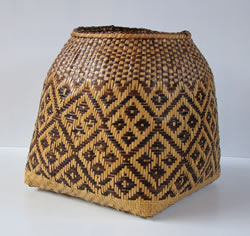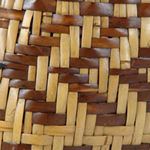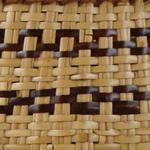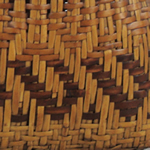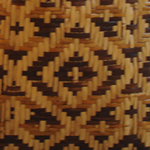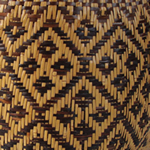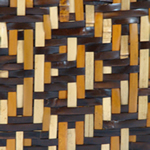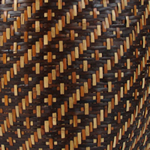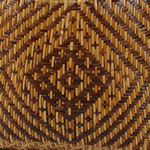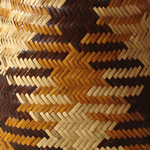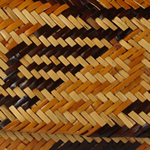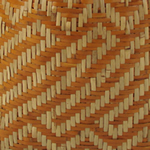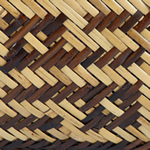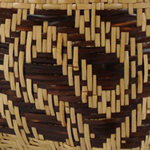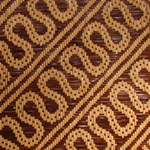Arts And Crafts: Pattern Index
Rivercane baskets have been made in the southeast for thousands of years. They are a hallmark craft of the Cherokee people. Rivercane is woven using two methods: the single weave and the double weave, the latter being a two-layered basket, one inside the other. Historically, rivercane basket patterns did not have names. Several Cherokee basket makers have remarked that their mothers-who, for the most part taught them to weave-did not use names for the many patterns they wove into their baskets. Rowena Bradley recalled, "My mother never had no names or no meaning to her designs. She just made them." Instead, basket makers communicated in terms of the weave itself, for example "over-two-under-two" or "over-five-under-five." Some say pattern names were given in the early 20th century by culture workers and teachers who encouraged basketmaking in the many Indian boarding schools set up to assimilate native peoples to Anglo ways. Whether or not there is truth to this statement, by the late 1930s, Native American teacher Lottie Stamper collected patterns and posted them to the walls of her classroom. 1 No matter their origin, today's rivercane basket patterns carry names that describe their weaves in representative terms, such as the Casket or Cross-on-a-Hill.
The following index illustrates many traditional rivercane patterns. Click on either the name or picture of a pattern to learn more.
Select a Pattern Name:
- Arrow Point
- Arrowhead
- Chain (1)
- Chain (2)
- Chief's Coffin
- Chief's Daughter (1) with Double Peace Pipe
- Chief's Daughter (2)
- Chief's Daughters (1)
- Chief's Daughters (2)
- Chief's Heart
- Coffin
- Cross on the Hill (1)
- Cross on the Hill (2)
- Diagonal Design
- Diamond
- Double Chief's Daughters
- Double Peace Pipe
- Evening Star
- Eye of the Sacred Bird
- Fishbone
- Flowing Water (1)
- Flowing Water (2)
- Flowing Water (3)
- Man in a Coffin (1)
- Man in a Coffin (2)
- Man in a Coffin (3)
- Man in a Coffin (4)
- Noonday Sun
- Peace Pipe (1)
- Peace Pipe (2)
- Serpent (1)
- Serpent (2)
- Stairway to Heaven (1)
- Stairway to Heaven (2)
- Star on the Mountain (1)
- Star on the Mountain (2)
1. Sarah H. Hill, Weaving New Worlds: Southeastern Cherokee Women and their Basketry (Chapel Hill: University of NC Press, 1997) xv-xvi and 300-302. Rodney Leftwich, Arts and Crafts of the Cherokee (Cherokee: Cherokee Publications, 1970) 38-39.

